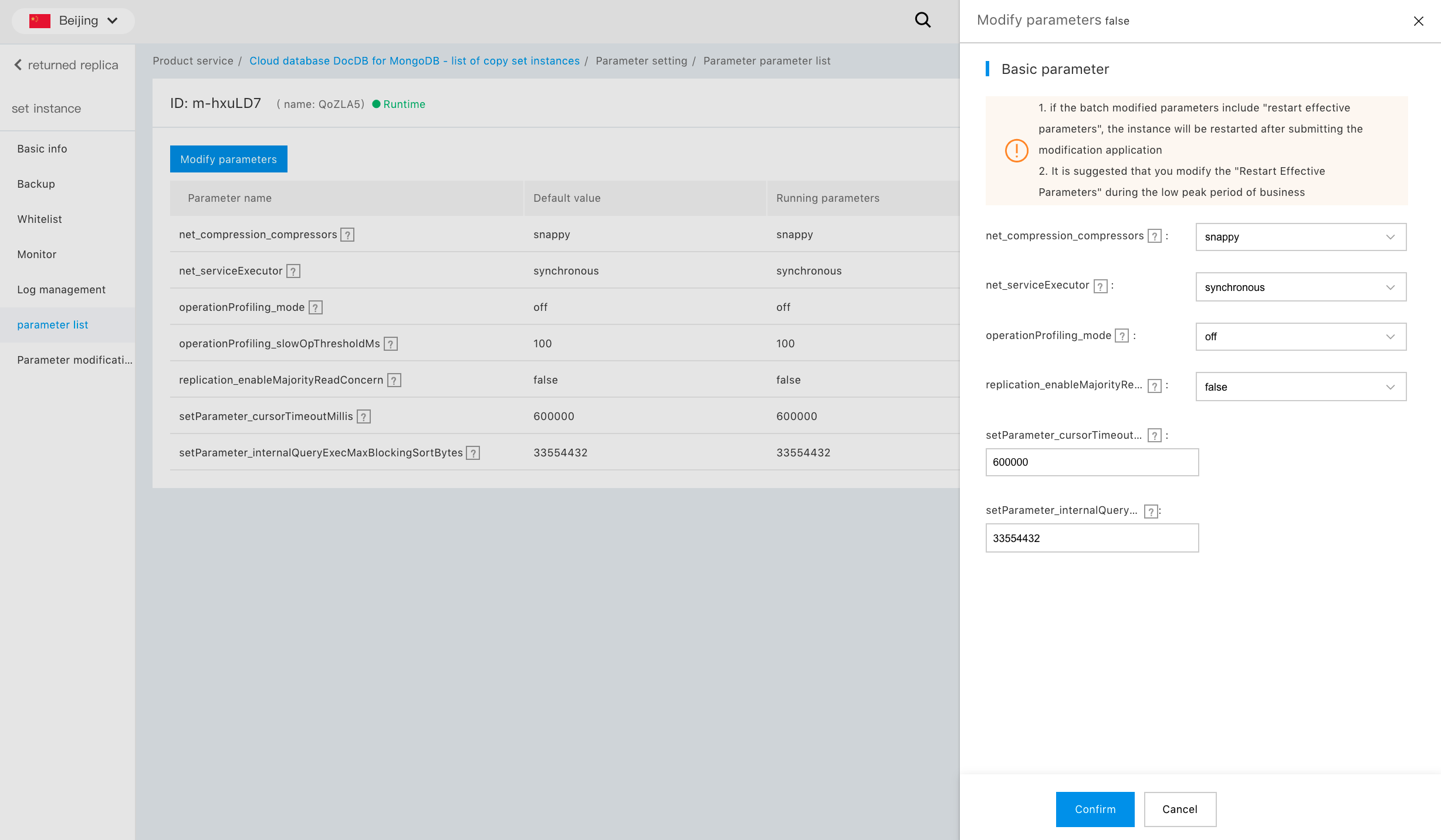Best practices for MongoDB parameter configuration
When users use Mongodb products, sometimes they need to set the parameters of Mongodb components according to business requirements. In order to facilitate users to change the parameters, this article will introduce the best practices of parameter configuration and modification in detail.
Best practices for parameter configuration
Introduction to the meaning, optional values and default values of parameters:
| Parameter | Meaning | Optional Value | Default Value |
|---|---|---|---|
| net_compression_compressors | default compression program for communication between Mongod or Mongos instances | snappy, disabled, zlib(≥3.6 available) | disabled(3.4), snappy (3.6, 4.0) |
| net_serviceExecutor | determine the thread and execution model used by mongos to execute client requests (≥3.6 available) | synchronous, adaptive | adaptive(Mongos), synchronous(Shard/Config) |
| operationProfiling_mode | specify which operations mongodb should analyze | off, slowOp, all | off |
| operationProfiling_slowOpThresholdMs | slow operation time threshold (milliseconds), operations with longer running time than this threshold are considered as slow | natural numbers[0-65536] | 100 |
| replication_enableMajorityReadConcern | whether support the read concern of majority level, if true, support; if false, not support, or called committed reads | false, true | false |
| setParameter_cursorTimeoutMillis | set idle cursor cache expiration time (milliseconds) | natural numbers [1-2147483647] | 600000(i.e. 10min) |
| setParameter_internalQueryExecMaxBlockingSortBytes | set the maximum data amount (bytes, b) returned by the sort statement when the index cannot be used | natural numbers [33554432-268435456] | 33554432(i.e. 32MB) |
Replica set parameter configuration
After the replica set instance is successfully created, you can see the default parameters of the instance, list of which is as follows:

If you need to modify the configuration, you can click Modify Parameters to call out the modification interface, as shown in the following figure:

For example, if we need to modify operationProfiling_mode和operationProfiling_slowOpThresholdMs,after modifying the following two items, click the "OK" button:
Then we will enter the "parameter modifying" interface, instance will be restarted during this process, we have to wait for the parameter modification to be completed:
When the cluster status returns to the "Running" status again, it indicates that the modification of parameters has been completed, the modification status of parameters can be viewed through the latest list.
Shard set parameter configuration
The parameter list of the shard set is as follows:
The parameter list of shard set is basically the same as that of the replica set, only the modifiable parameters are different in different components, which can be modified by selecting multiple components of the same type. If we need to modify the parameters of Mongos, first click on the "Mongos" tab and select the Mongos component we need to modify. If we need to modify the parameters of all Mongos components, we can operate as per the following figure:
Check all Mongos components, then click the "Parameter Modification" button, the following modification page then pops up and shows the list of parameters to be modified and the list of nodes to be modified, the interface is as follows:
Click "OK" button to start parameter modification, then we will enter the state of "Parameter Modification", as shown in the following figure:
Refresh the page to view the latest status. When the status changes back to "Running" again, the reconfiguration is completed and the two parameters change as the revised target values.。
